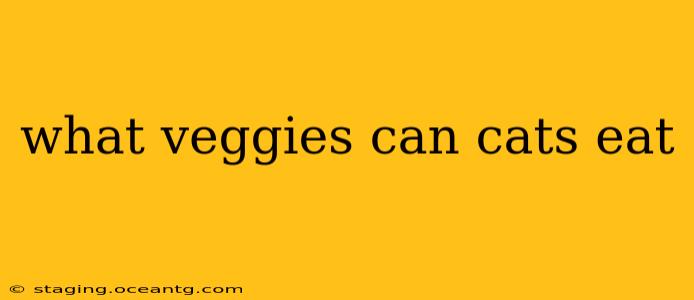What Veggies Can Cats Eat? A Comprehensive Guide for Feline Foodies
Cats are obligate carnivores, meaning their bodies are designed to thrive on a diet primarily consisting of meat. However, introducing small amounts of certain vegetables can offer some nutritional benefits and add variety to your cat's diet. It's crucial to remember that vegetables shouldn't replace meat in a cat's diet, but rather supplement it. Always introduce new foods gradually to monitor for any adverse reactions.
Here's a breakdown of vegetables suitable for feline consumption, along with important considerations:
Safe Vegetables for Cats (in moderation):
-
Cucumber: These are a great low-calorie, hydrating snack. Cut them into small, bite-sized pieces to avoid choking hazards. Offer them sparingly as a treat.
-
Green beans: These are a good source of fiber and vitamins. They should be cooked and served plain, without added salt or butter. Again, moderation is key.
-
Carrots: Rich in beta-carotene (which converts to Vitamin A), carrots should be cooked or pureed before offering them to your cat. Raw carrots can be difficult for cats to digest.
-
Peas: These are a good source of fiber and vitamins, but should be offered in small amounts and cooked.
-
Broccoli: Small amounts of cooked broccoli florets can be offered occasionally. Avoid the stalk, which is harder to digest.
-
Pumpkin (plain, canned): Plain, canned pumpkin (not pumpkin pie filling) is excellent for digestion and can help with constipation. A small spoonful is usually sufficient.
Vegetables to Avoid:
Several vegetables are toxic to cats and should be kept completely out of their reach. These include:
-
Onions and Garlic: These contain compounds that can damage red blood cells in cats, leading to anemia.
-
Avocados: Contain persin, a toxin that can cause vomiting and diarrhea in cats.
-
Mushrooms: Many types of mushrooms are poisonous to cats.
-
Grapes and Raisins: These can cause kidney failure in cats.
-
Corn: While not inherently toxic, corn is difficult for cats to digest and offers little nutritional value.
-
Potatoes (raw or green): Contain solanine, a toxic compound.
-
Rhubarb: Contains oxalic acid, which is toxic to cats.
How to Introduce New Vegetables:
When introducing a new vegetable, start with a tiny amount and observe your cat's reaction. Look for any signs of digestive upset such as vomiting, diarrhea, or changes in appetite. If you notice any adverse effects, stop feeding the vegetable immediately and consult your veterinarian.
What are the benefits of feeding my cat vegetables?
While cats don't require vegetables in their diet, small amounts can provide some benefits, including:
- Increased Fiber: Certain vegetables can aid in digestion and prevent constipation.
- Added Vitamins and Minerals: Some vegetables contain essential vitamins and minerals in small amounts.
- Variety: Adding variety to your cat's diet can help to keep them engaged and interested in their food.
Can I feed my cat raw vegetables?
While some vegetables can be offered raw, it is generally recommended to cook them. Cooking softens vegetables, making them easier for your cat to digest. Raw vegetables also carry a higher risk of containing bacteria or parasites.
Should I supplement my cat's food with vegetables?
Before making any significant dietary changes, consult with your veterinarian. They can assess your cat's individual needs and determine if adding vegetables to their diet is appropriate and safe.
Remember, a balanced and high-quality cat food should form the basis of your feline friend's nutrition. Vegetables should be considered a supplemental treat, not a replacement for meat-based meals. Always prioritize your cat's health and safety.
